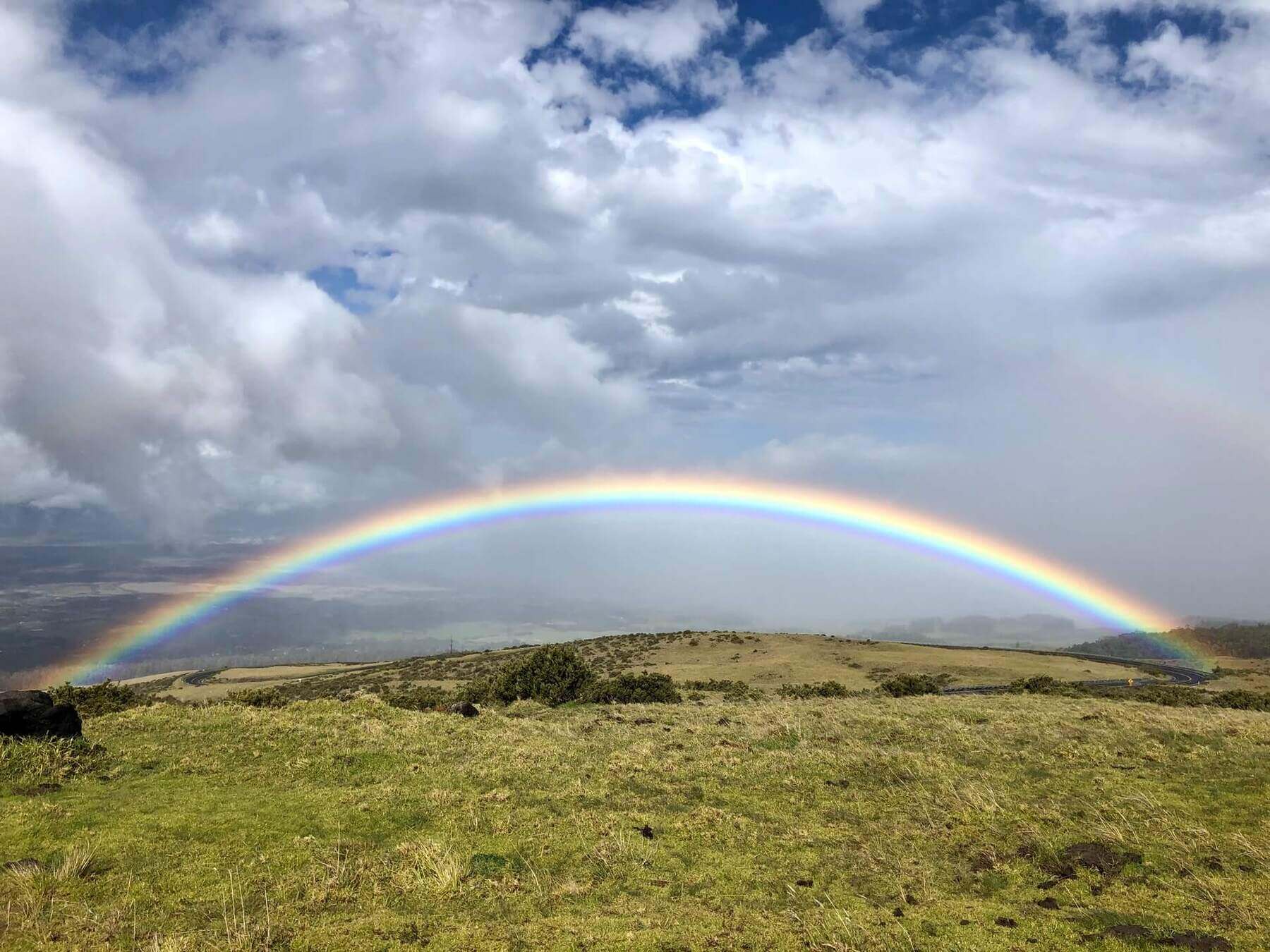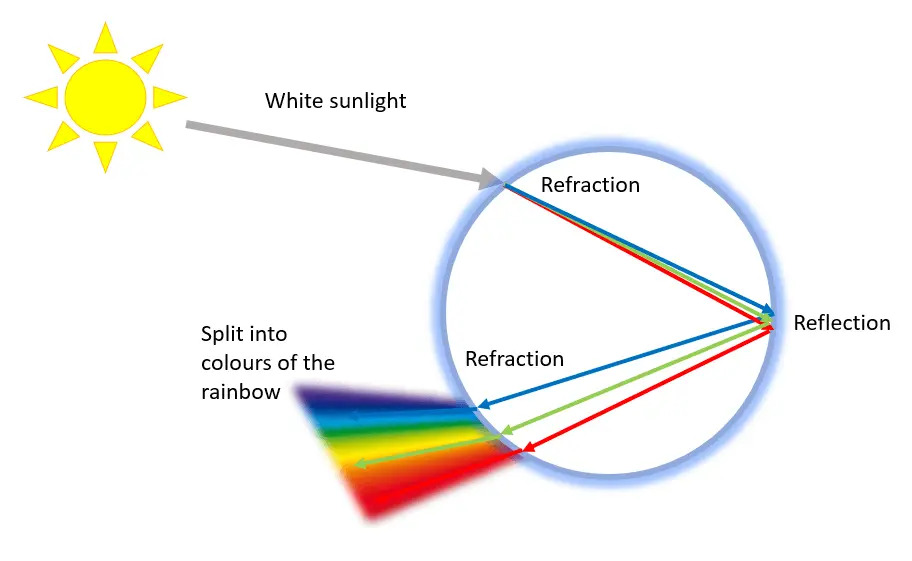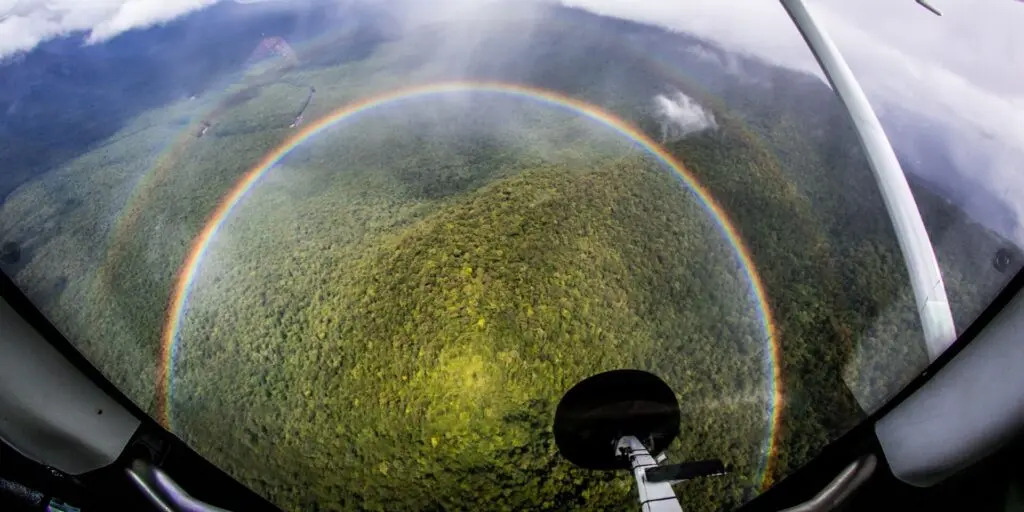
Now recognised as a symbol of hope and gratitude, a rainbow is a beautiful natural phenomenon. But how do they form? And why are they curved? Find out what makes a rainbow, and where to look for that pot of gold…
After it rains, the air is filled with moisture and clouds may give way to sunshine. The interaction of sunlight with the water droplets in the air is what produces the iconic arc of colour, but why don’t we see them every time it rains? And why the arc shape?
First of all, the following three key conditions must be met for a rainbow to be visible:
- The sun must be shining from behind you
- The air in front of you needs a lot of moisture – usually from rainfall
- The sun must be low in the sky (below 42°, to be exact)
If all these are met, there’s a high chance you’ll see a rainbow!
What happens when sunlight hits a raindrop?
Despite their teardrop-shape depiction, raindrops are actually spherical balls of water. When light passes from air into water, it slows down, forcing it to change direction. This is a process called refraction. White sunlight is composed of all colours, each of which changes direction by a slightly different amount, so the beam is split into its constituent colours. If the sunlight enters the water drop at a particular angle, some of the light will be reflected on the other side of the sphere and come back out of the droplet, being refracted again and therefore split even more into its different coloured beams.

The moisture in the air required to scatter the sunlight usually comes from rainfall, however rainbows can also be seen in the spray of waterfalls, or even around a garden sprinkler.
So that’s one droplet, how does it make a whole rainbow?
Every raindrop reflects and refracts the sunlight in the same way but only the light from certain raindrops will actually reach your eye (depending on where you are standing). The rainbow that you see is curved because the set of raindrops that have the right angle between you, the water droplet and the Sun all lie on a cone that points at the Sun, with you at the tip. Each colour has a particular angle at which it must enter the droplet to be reflected back out in the direction of your eye, with maximum brightness. This means that each colour appears to form a ring, with slightly different rings for each colour, which we see as the concentric arcs of the rainbow.
Why are rainbows curved?
Now we know that the geometry is only exactly right for droplets lying on a particular circle. Hold on – a circle? Yep, if the ground wasn’t there, we’d actually see rainbows as full circles, it’s just that the horizon gets in the way so we only see an arc! What’s more, if you move then the rainbow will appear in a different position: as you change your angle, different water droplets will reflect the light into your eye. Sadly, this makes hunting the pot of gold a pretty futile task… The rainbow will keep moving, and maybe even disappear completely if those three key conditions are no longer met.
From the ground, rainbows will always appear as an arc, with a full semicircle visible if the sun is exactly on the horizon behind you. However, full circle rainbows can be seen if you’re looking from above.

Next time you see a rainbow, check and see for yourself that the sun is behind you – and see how many different colours you can spot! What do you notice about the brightness of the sky above vs. below the rainbow?